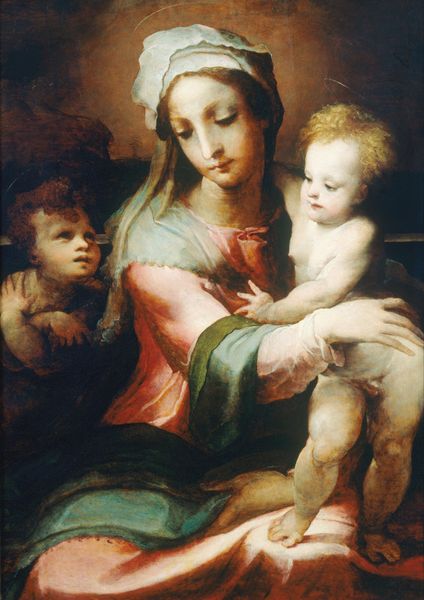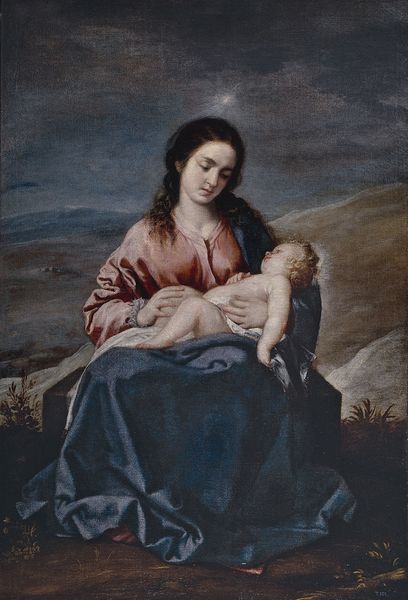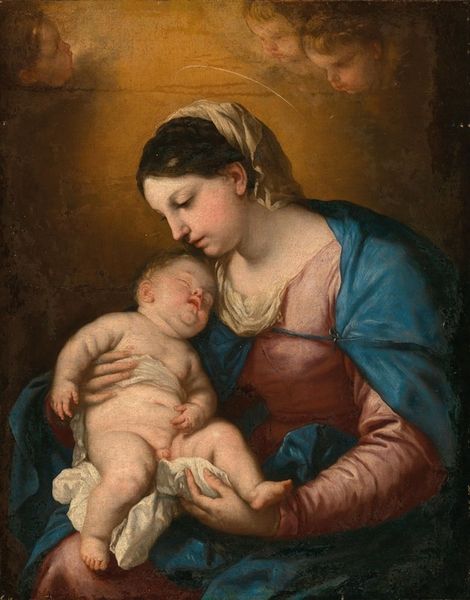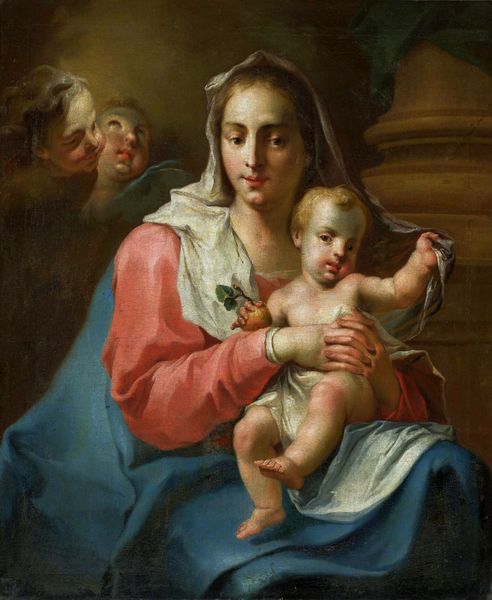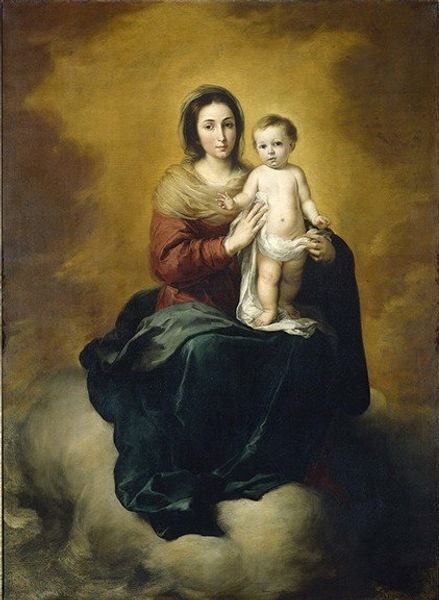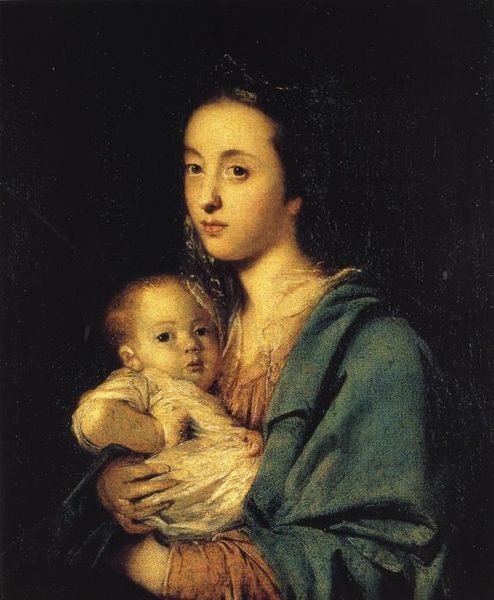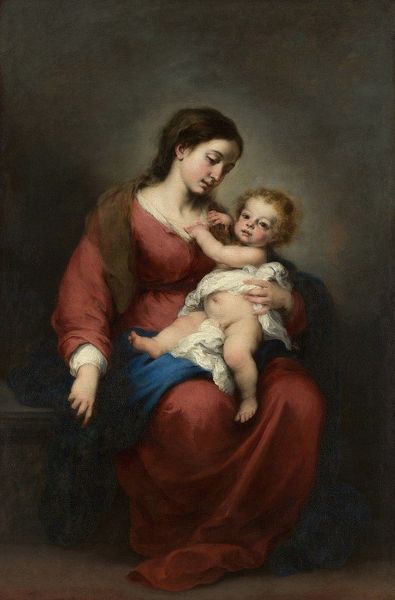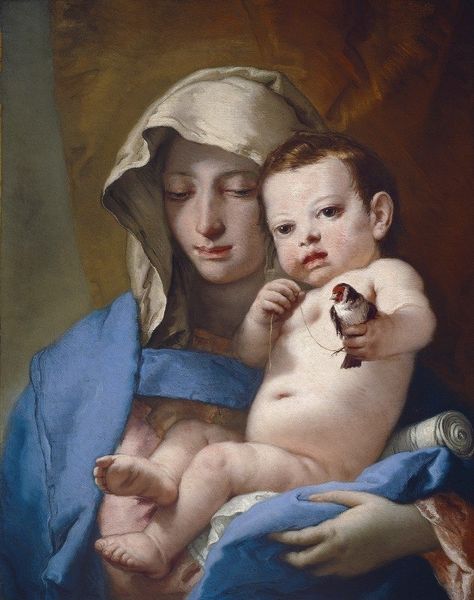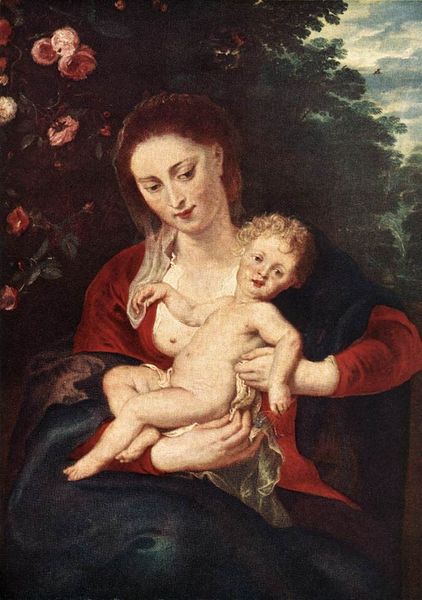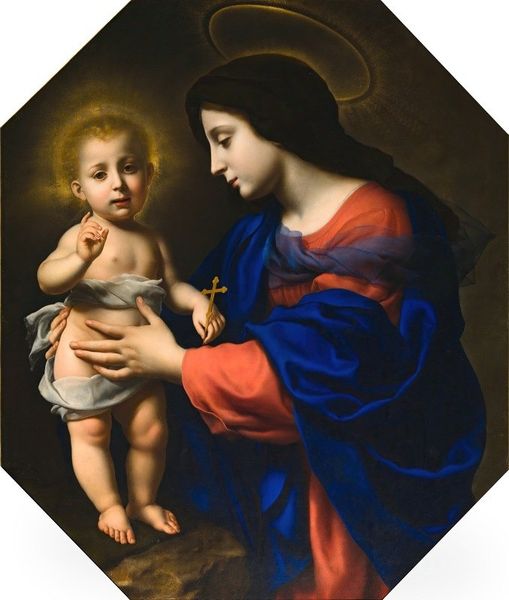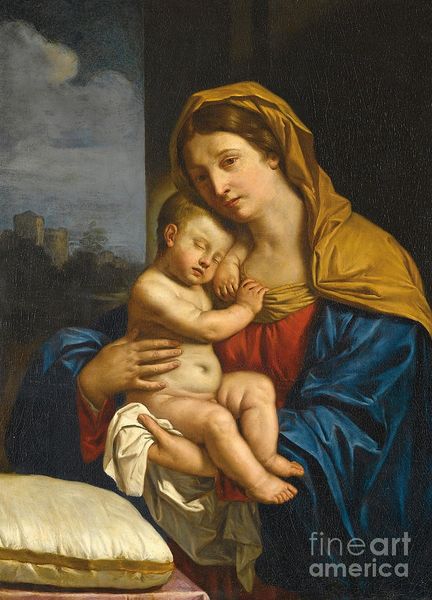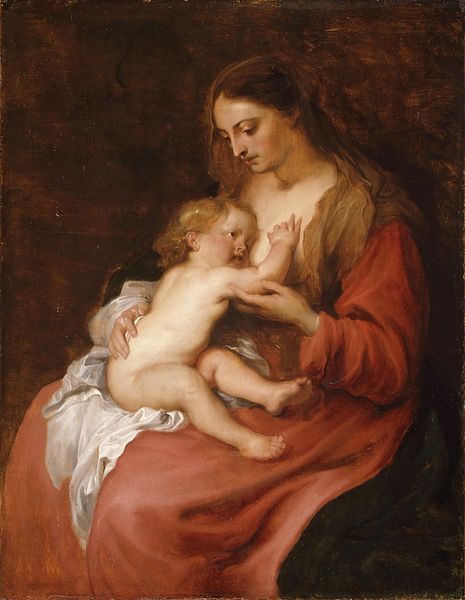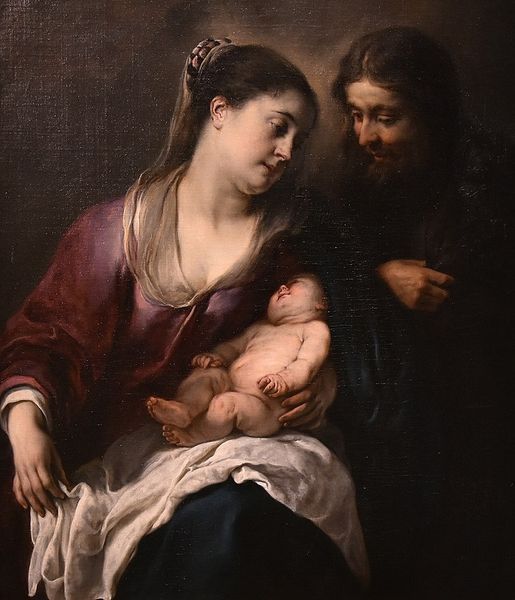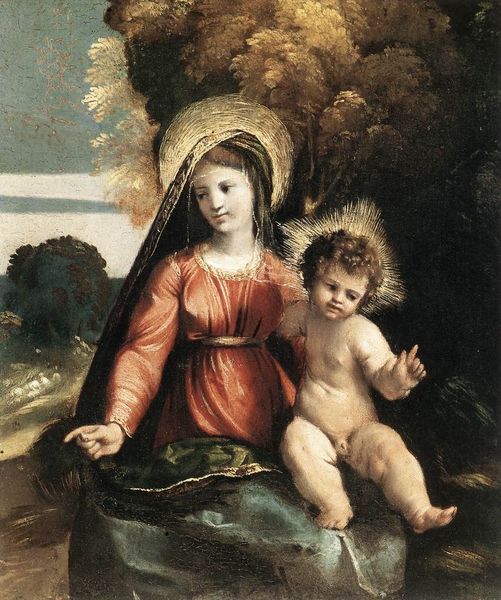
painting, oil-paint
#
portrait
#
baroque
#
painting
#
oil-paint
#
figuration
#
madonna
#
chiaroscuro
#
history-painting
#
italian-renaissance
#
virgin-mary
Copyright: Public domain
Editor: This is "Madonna with a Napkin" by Bartolomé Estebán Murillo, painted in 1666. It’s an oil painting. What strikes me is the darkness surrounding the figures, really highlighting them. What’s your interpretation of this work? Curator: It's a fantastic example of Murillo adapting Baroque styles to resonate with the religious sensibilities of 17th-century Spain. The intimate portrayal of the Madonna and Child speaks volumes about the changing role of religious imagery. Think about it: we move from distant, divine figures to a relatable mother and child. Editor: So, it's a shift in how the Church presented itself? Curator: Precisely. Murillo humanizes these holy figures. Notice the "napkin"—probably more of a swaddling cloth. This detail underscores Mary's maternal role, moving away from pure veneration toward a compassionate, approachable figure. Consider, too, that Seville was a major port at the time. Paintings like these were circulated widely, shaping religious perceptions across the Spanish empire. Editor: That makes sense. The painting style, combined with the widespread circulation, likely amplified its impact. What about the almost theatrical use of light? Curator: Ah, yes! The *tenebrism* isn’t just for drama; it focuses the viewer's attention, creating a space for intimate contemplation. The strong contrasts guide your eye to what the Church perhaps wanted you to focus on: the humanity and tenderness of Mary. Editor: It’s fascinating how Murillo used these artistic elements to shift the public's understanding. Thanks for highlighting that connection between art, religion, and society. Curator: My pleasure! Thinking about the social and historical context always adds another layer to the art.
Comments
No comments
Be the first to comment and join the conversation on the ultimate creative platform.
